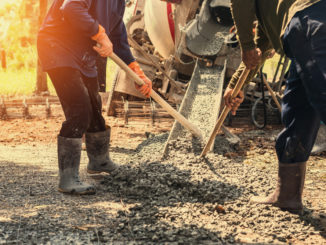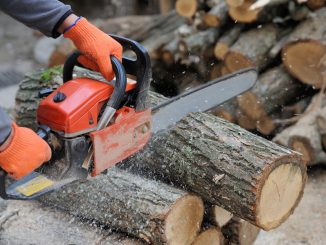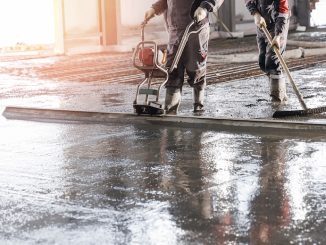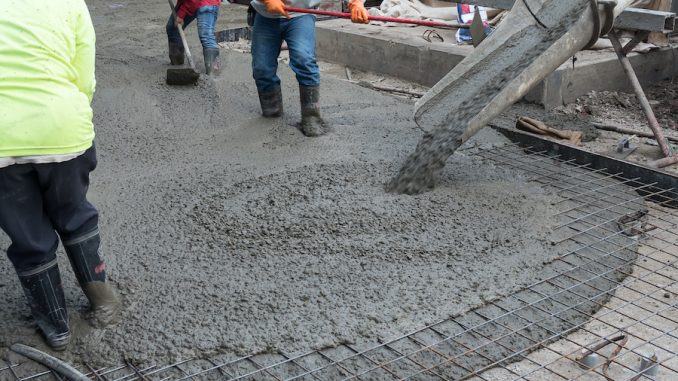
View the complete article here.
Introduction
Revenue per employee in the concrete manufacturing industry has increased in the last five years. But, concrete manufacturing poses many risks for the 250,000 employees in this industry. Cement dust alone can cause eye, skin, and respiratory tract irritation. Wet concrete can cause chemical burns. And, as in any manufacturing environment, slipping, tripping, and falling are always a concern. Concrete manufacturing companies can mitigate most of these risks with common sense workplace safety programs. A combination of training, safety equipment, and safety incentive programs should be implemented to keep workers safe on the job. It always costs less in the long run to implement these programs. Besides, in 2019 U.S. cement manufacturing companies raked in $9.82 billion — they can afford it.
OSHA Sees a Lot of This
10% of the 250,000 workers in concrete manufacturing have been injured – about 42 of them die each year. These are eight issues that the Occupational Safety and Health Administration (OSHA) cites often in worksite inspection reports…
Hazard communication
Companies are required by OSHA to identify and provide Material Safety Data Sheets (MSDS) on all chemicals that workers are exposed to on the job site. Chemicals must be properly labeled. Access to each MSDS must be available and easily accessible to all employees. The chemicals used on the job, their safe use, and what to do in the event of chemical exposure should be part of an employee training program. Although this seems like just a lot of paperwork, the goal is to reduce chemical exposure and injury by increasing workers’ knowledge of the chemicals they are working with and around.
Lockout/tagout (LOTO)
Before equipment is repaired or maintained, steps must be taken to ensure that it is properly shutdown – and won’t accidentally start back up. OSHA has specific rules related to managing what they call “hazardous energy.” In general, the hazard is identified and tagged and locked down so that workers won’t get hurt while fixing a machine. OSHA requires an annual audit of a company’s LOTO procedures.
Confined spaces
Crawling inside a cement mixer is not for the claustrophobic. It’s also risky. OSHA estimates 90 fatalities a year are related to working in a confined space. Some confined spaces require a permit before an employee can enter it. This includes a space with sloping walls or floors where a worker can get trapped. Or, where there are unguarded machines or live wires. Safety procedures should include constant contact visually or via phone with the worker, proper ventilation, and adequate lighting.
Respiratory protection
Let’s make this simple: Silica dust can kill you. Wear a P-, N-, or R-95 respirator if you are agitating any material that comes from the earth. Cutting, sandblasting, coring, drilling – they all help that silica dust become airborne. Throwing on a disposal mask is not sufficient. Yes, it’s hot in there. Man up and put on your respirator.
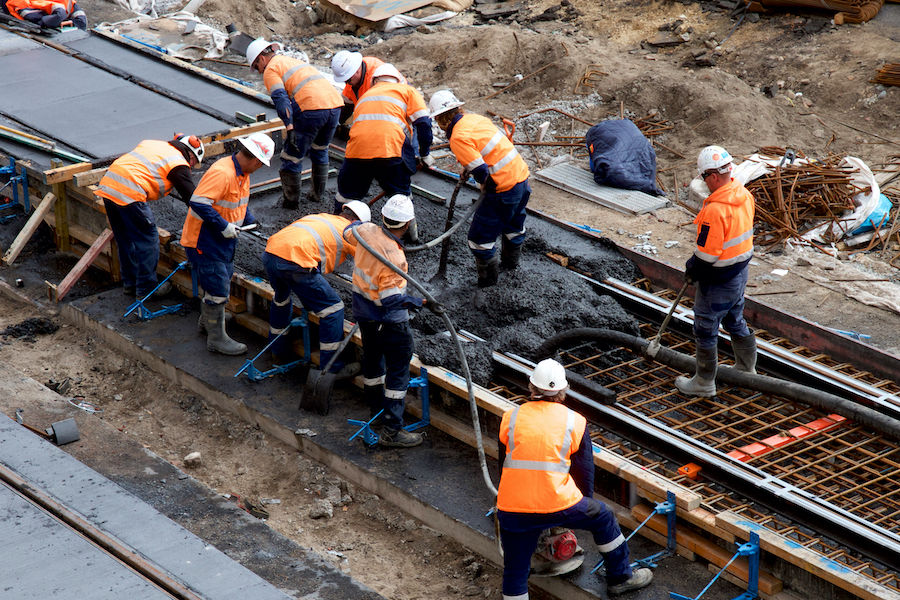
Guarding floor & wall openings and holes
Hard to believe this one is on the list. But there it is. Workers can trip and fall down and through open holes. Put up signs and guards around them.
Noise exposure
Manufacturing is loud. Over time, it can lead to partial or even complete hearing loss. Wearing ear protection now can help you avoid those funky-looking hearing aids later on in life.
Forklifts
OSHA reports that 70% of forklift accidents are preventable. The three most common accidents include workers falling off the forklift, the machine tipping over, and getting crushed or pinned by a forklift. First and foremost, workers should receive proper training on forklift operation. Forklift operators should drive slowly and stop at intersections to check for other people.
Machine guarding
Machines used across industries cause 18,000 injuries in the U.S. each year. We’re talking everything from serious cuts to amputations. Manufacturers include some safety features in their machines. But companies should add appropriate guards to further protect employees using these machines. Machine guards can protect workers from moving parts or flying shards. OSHA provides a machine guarding checklist here.
Common Sense Workplace Safety
Here are ways to protect workers from common workplace hazards:
Hazard Analysis
Concrete manufacturing companies should identify and document all of the hazards in the workplace. Once the potential hazards are understood, a safety plan can be developed.
Safety Plan
A written safety plan should be developed and used for training workers. This increases workplace safety and mitigates the legal and financial risks associated with not having a documented plan.
Comprehensive Training
Workers should be trained in safe work practices, how to properly use equipment, what to do in the case of an emergency, how to properly repair and maintain equipment, and basic first aid.
Personal Protective Equipment (PPE)
Workers should be required to wear personal protective equipment (PPE). Respirators, protective footwear, and appropriate clothing such as gloves, eyewear, and hearing protection. It is particularly important to wear eye protection when chipping and cleaning forms, products, or mixers.
Environmental Protection
HEPA vacuums and dust-removal systems can reduce the risk of silica dust exposure. Of course, this is in addition to personal protective equipment.
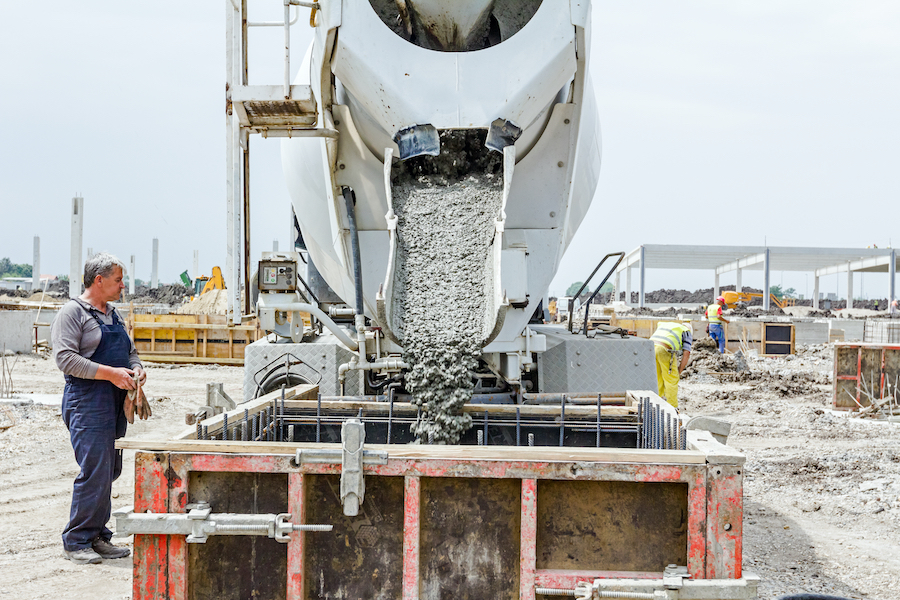
Preventing Trips and Falls
OSHA reports that 15% of industrial workplace accidental deaths are caused by workers tripping or falling. Preventative steps include:
- Clean up spills quickly.
- Keep main walkways clutter-free.
- Cover exposed cords with safety tape.
- Replace worn flooring immediately.
- Provide handrails in areas where a worker may have difficulty keeping their balance.
Cement Dust
If a worker gets cement dust in their eyes, they should immediately rinse them. They should also consult with a doctor. Use soap and water to wash off dust to avoid damage to the skin. Finally, to avoid ingesting cement dust, only eat and drink in dust-free areas.
Wet Concrete
Wet concrete can irritate skin and even cause chemical burns. Wear alkali-resistant gloves, coveralls with long sleeves and full-length pants, waterproof boots, and eye protection. A worker who does get wet concrete on their skin should wash it with cold, running water as quickly as possible. If a worker gets wet cement in their eyes, they should rinse them with water for at least 15 minutes. Then, go to the nearest hospital.
Machine Guarding
To reduce machine-related injuries, workers should:
- Use appropriate guards on power tools.
- Regularly maintain conveyer belt systems.
- Use extra care in clearing conveyer belt jams.
- Use guards on mixers, block makers, cubers, and metalworking machinery.
- Use lockout / tagout procedures when repairing or maintaining equipment.
Falling Objects
To reduce injuries caused from falling objects, workers should:
- Avoid working beneath cuber elevators, conveyor belts, and stacker / destacker
- Avoid walking or working under overhead loads.
- Store materials properly.
- Confirm that form work, casting, and stressing operations are adequately braced and chocked. This ensures that the sudden release of materials is avoided.
- Put rigging in place during stacking and hoisting to safeguard against falling materials and objects.
Ergonomics
Some work requires repetitive motions or maintaining an awkward position for a long period of time. Also, workers may have to lift heavy objects. This can result in sprains, strains, and other musculoskeletal issues.
To prevent ergonomic-related injuries, workers should:
- Be trained in safe lifting techniques.
- Get help with lifting very heavy objects.
- Avoid working in awkward positions.
- Whenever possible, use forklifts and hand trucks.
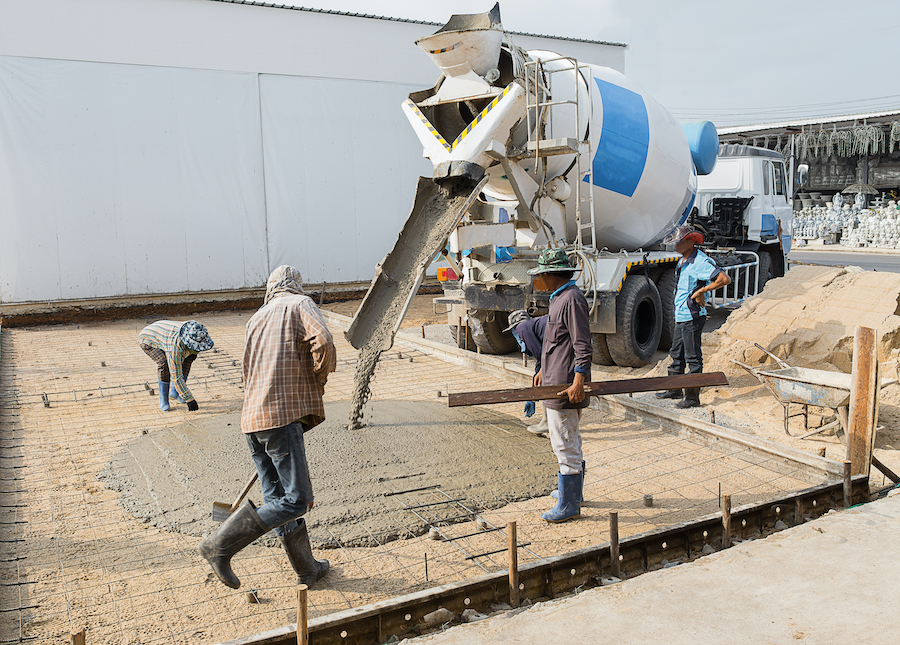
Confined Spaces
Working in confined spaces like mixers and ready-mix trucks pose safety risks for workers. Workers should:
- Be trained in procedures for entering and working in confined spaces.
- Take steps to protect themselves from heat stress when cleaning truck mixer drums.
- Wear personal protective equipment when removing concrete residue from the inside of truck mixer drums. This protects against silica exposure.
Vehicles
Recklessly driving vehicles – or using poorly maintained vehicles – increases the likelihood of injury on the job. Workers should:
- Ensure back-up alarms on all vehicles are working.
- Not overload cranes and hoists.
- Protect against hand and finger injuries by using care with the load out chute on concrete mixers.
- Be aware of hot surfaces on equipment and truck components.
- Use protective eye equipment while loading and unloading aggregate material.
- While loading / unloading cement and while using pneumatic chippers inside mixer drums, wear equipment to protect against hearing loss due to excessive noise exposure.
But wait – there’s more! In addition to the many hazards in concrete manufacturing, workers should also be aware that:
- Welding operations can result in flash burns.
- They are more likely to fall if they use makeshift ladders, platforms and stairs without guardrails.
- Concrete forms can fall and injure them if they are not properly chocked, braced, or cribbed.
Conclusion
That “better safe than sorry” adage is more than just something your grandma says. To stay healthy and on the job, follow your company’s safety procedures and use good old-fashioned common sense. You should know how to safely perform all of your tasks, including how to use the required tools and equipment. Wear the right clothing – like proper shoes and coveralls to protect your skin and reduce the risk of tripping. Use personal protective equipment to keep your eyes and ears in good working order. And, to protect against dangerous silica dust in the air. Be heads up! Take it slow, hold on to that handrail, and, if you’re not sure about something – ask! Even concrete manufacturing workers can learn a little something from grandma.
View the complete article here.
Other Hazards
What are the common hazards in concrete manufacturing, and how can they be mitigated?
Common hazards include cement dust, wet concrete, machine-related injuries, falling objects, ergonomics, confined spaces, and vehicle-related risks. Mitigation involves hazard analysis, safety plans, comprehensive training, personal protective equipment (PPE), environmental protection, and preventative measures against trips, falls, and specific hazards.
How can workers protect themselves from concrete-related risks such as cement dust exposure and wet concrete irritation?
Workers should wear appropriate personal protective equipment (PPE) like respirators for silica dust, alkali-resistant gloves, coveralls, waterproof boots, and eye protection. In case of exposure, immediate rinsing for eyes and skin is crucial, and workers should seek medical attention for eye exposure.
What are the common hazards in concrete manufacturing, and how can they be mitigated?
Common hazards include cement dust, wet concrete, machine-related injuries, falling objects, ergonomics, confined spaces, and vehicle-related risks. Mitigation involves hazard analysis, safety plans, comprehensive training, personal protective equipment (PPE), environmental protection, and preventative measures against trips, falls, and specific hazards.
How can workers protect themselves from concrete-related risks such as cement dust exposure and wet concrete irritation?
Workers should wear appropriate personal protective equipment (PPE) like respirators for silica dust, alkali-resistant gloves, coveralls, waterproof boots, and eye protection. In case of exposure, immediate rinsing for eyes and skin is crucial, and workers should seek medical attention for eye exposure.






































